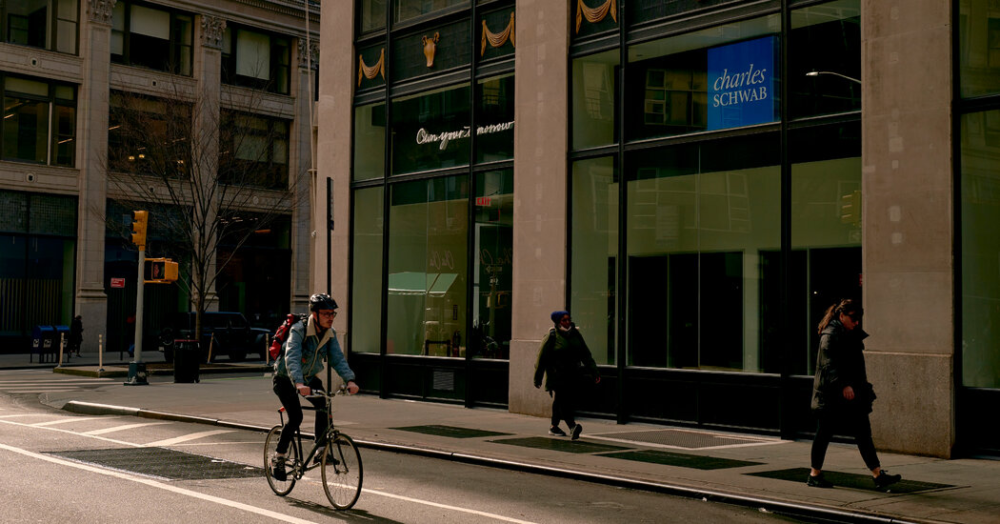Charles Schwab generated a profit of $1.6 billion in the first quarter of the year, it said Monday, faring better than Wall Street expected and seeming to ease recent concerns about its financial health. Schwab’s stock, which plunged after the company was swept into the banking turmoil following the collapse of Silicon Valley Bank last month, rose after the report.
Still, the outlook was mixed: A meaningful share of Schwab’s customers moved their deposits into accounts that paid more interest, which could put pressure on the company’s earnings for the foreseeable future.
Although Schwab is best known for its giant brokerage business, it also has a large banking arm. The bank’s balance sheet held billions of dollars in bonds that dropped in value as the Federal Reserve rapidly raised interest rates. Silicon Valley Bank held similar bonds, and when it was forced to sell some at a loss, nervous depositors demanded their money in a classic run on the bank.
That spooked investors in Schwab, who worried that the company could face similar pressures; its stock fell, rousing its top executives to rush in to defend its financial position. Schwab’s shares rose nearly 4 percent on Monday, but they were still down more than 35 percent since the start of the year.
“I would certainly hope that by this point in time,” Walt Bettinger, Schwab’s chief executive officer, said on a conference call, “speculation that we would find ourselves in a position where we would be forced to sell securities that have temporary paper losses has been put to bed.”
Schwab’s profit in the first three months of the year was up 14 percent from a year earlier, while revenue rose 10 percent. Though its earnings surpassed expectations, analysts had been steadily lowering their forecasts since January.
“Schwab’s first-quarter earnings should put much of the concerns about the company to rest,” said Michael Wong, director of equity research, financial services, at Morningstar.
Customer deposits dropped significantly in the first quarter, falling by $41 billion, or 11 percent, from the previous quarter. But client holdings in Schwab’s money market funds rose by nearly $80 billion, or 28 percent. The company opened one million new brokerage accounts in the first quarter, which brought in $132 billion of net new assets.
“So clients that took deposits out seemed to stay in the Schwab ecosystem,” Mr. Wong said.
JPMorgan Chase, the nation’s largest bank, last week reported a small rise in deposits in the first quarter, while Citigroup and Wells Fargo revealed modest outflows. The banks, like Schwab, also announced bigger-than-expected profits, because they were able to charge more for loans than they paid out in deposits as the Fed raised interest rates.
About half of Schwab’s revenue last year came from so-called net interest revenue, which was $2.7 billion in the first quarter, down 9 percent from the fourth quarter but up 27 percent from the same period in 2022.
Most of that is generated from its customers’ uninvested cash. Schwab pays customers interest of, say, half a percent on their assets and then invests the money at higher rates, pocketing the difference. But as customers shift deposits into higher-yielding accounts at Schwab or elsewhere, it raises the company’s cost of funding and pinches profits.
Schwab’s executives acknowledged that these higher costs would continue to hit profits in the immediate future, but that it was a manageable challenge — and one it expected to taper off over the next several quarters.
For now, said Peter Crawford, Schwab’s chief financial officer, the company will pause stock buybacks “in light of recent events within the U.S. banking sector, and the resulting regulatory uncertainty.”



